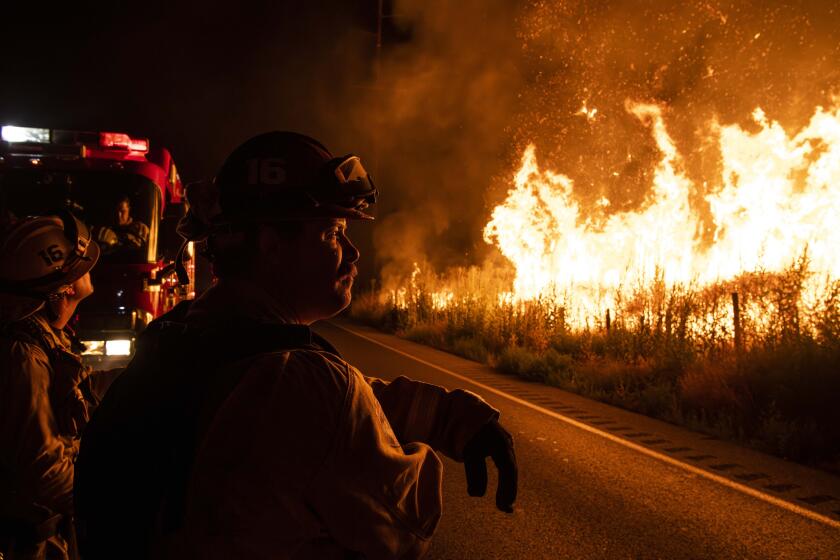Dry Run for Rescue Team Makes a Splash
- Share via
Over a narrow channel of rushing water, Air Crewman Pat Armour leaned against a harness, his feet braced against a helicopter’s landing skids.
“A bit to your right. Five, four, three, two, one. Perfect,” he said into a microphone in his helmet, helping pilot Warren Messina position the helicopter over the water.
Members of the county’s swift water rescue team, Armour and Messina were in training Wednesday at the East Valley channel. They were gearing up for the next rainy season, when Los Angeles County fire officials will get calls to rescue people who have been trapped in storm-swollen flood control channels.
The idea, said battalion chief for air operations Keno DeVarney, is “to make sure when the rains come, they’re ready to go to work.”
During the Wednesday practice, two people, one playing the victim and one a rescuer, floated in the fast-moving waters, their faces toward the sky. The helicopter rotors whipped up a fierce spray.
“Swimmers are in the channel. I have them in sight,” Armour told Messina as the helicopter hovered. “We’re looking real good.”
The rescuer, in an orange wet suit, pulled a 2-inch nylon strap across the chest of the firefighter who was posing as a victim. The helicopter hovered near, dangling a 30-foot rope. The rescuer grabbed it and signaled Armour.
The helicopter lifted and the two men dangled below until Messina lowered them to the ground.
That technique was one of two designed by county fire officials in the past two years. They are to be used as last resorts when ground-based rescue attempts have failed.
In the other technique, also new, a rescuer is lowered to the victim and both are carried to safety. It’s different from the traditional technique of using a motorized winch because the rope is attached inside the helicopter and the victim and rescuer are not pulled back up to the aircraft.
Because the rope is attached inside the helicopter, closer to the center of gravity than an outside winch, there is also less danger of it tipping over. The county used both systems last winter, when crews were called to 60 rescues.
“We had to come up with some way so we could get the helicopter in there fast, do it, and get out,” said Capt. Roger Wilhelm, a former Navy SEAL heading the county’s swift water helicopter operations. “There might be times when we have only a minute window of opportunity.”
More to Read
Sign up for Essential California
The most important California stories and recommendations in your inbox every morning.
You may occasionally receive promotional content from the Los Angeles Times.










